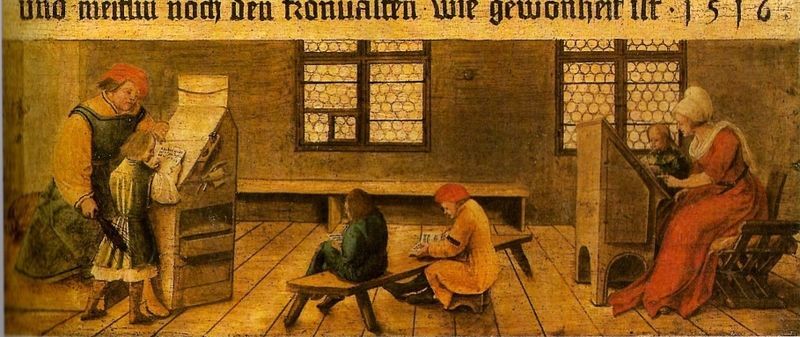The concepts covered in this fact sheet go beyond those seen in high school. It is intended as a supplement for those who are curious to learn more.
By the end of the 1000s, the Church's influence was growing. In addition to its spiritual and religious influence, it now began to meddle in Western politics. The Church maintained close ties with certain kings, including Charlemagne. The arts and education were also strongly influenced by the Church.
The Church uses art to convey its message. The various places of worship in town (cathedrals, churches) contain many works that present the religious history and values advocated by the Church. Numerous frescoes, sculptures and stained-glass windows depict figures connected with the Church. The use of images was important, since most people of the time could not read.

Following Charlemagne's initiative, several schools were created around churches and monasteries. The king of the Franks wanted the people to be better educated. The education offered to children varied according to their social rank. Schooling, however, was strictly reserved for boys.
The lords' sons were educated inside the castle. On the other hand, their nobility despised education in favor of war and chivalry. That's why the boys learned to ride, hunt, fight, handle weapons and more. They learned all this with the aim of becoming knights. The sons of wealthy families studied at the abbey, where they learned music, Latin and geometry.

Boys from poorer families didn't go to school. They had to work to help their families, so they learned to cultivate the land. Noble girls learned to run the household and make tapestries. Girls from poor families, on the other hand, learned to take care of household chores. Schools, such as those established by Charlemagne, were free and run by monks. However, they were reserved for those who wished to become priests. Students were taught Latin and sacred texts.
Before the Middle Ages, many cities had centers of learning. These centers were not really universities, but rather large schools devoted to a particular field: law, medicine, etc. The first real universities were founded in the 12th century. These grandes écoles were self-administered and had a monopoly on higher education. These universities were the only ones to offer official degrees to their students. The first universities were founded in Bologna and Paris (University of Bologna, University of Paris). Students entered university at the age of 14. They took public entrance examinations in which they had to demonstrate their knowledge and sound reasoning. By the end of the 13th century, Sorbonne University was home to 10,000 students.
Before being admitted to university, students had to have completed their primary studies, during which they learned Latin grammar. These studies were carried out by a private tutor or in a school. The other main factor in admission to university was cost. As the cost was very high, only a small number of students had access to university. Most students came from the lower nobility or wealthier artisan families.
The choice of university was mainly based on proximity. As soon as they arrived in the new town to study, students had to start looking for accommodation. Since available housing was expensive, many students shared the same apartment. If a student couldn't afford to rent, he or she could also share a room with a graduate or stay at a religiously-owned college, where room and board were provided.
Students were also responsible for finding a master with whom they would study throughout their time at university.